Choosing the perfect paintbrush can be a daunting task, whether you’re just starting out as an artist or a seasoned pro looking to refine your skills.
With so many options available, it’s easy to feel overwhelmed. But fear not! Our comprehensive guide is here to help you navigate the world of paintbrushes with ease.
From understanding the different sizes, shapes, and types of bristles to selecting the right brush for specific techniques, we’ve got you covered.
Whether you’re aiming to create intricate details or bold strokes, our guide will ensure that you have the perfect tool to bring your artistic vision to life.
So, grab your palette and let’s dive in!
How To Choose The Right Size Of Paint Brush For Your Painting Project?

Choosing the right paintbrush size is crucial for a great painting outcome.
Here’s a simple guide:
- Consider the Project Size: For large projects, like big canvases, opt for bigger brushes that cover large areas fast, like a fan brush.
- Think about Detail: If you need precision, smaller brushes are your go-to. But if you want broader strokes, go for larger brushes.
- Material Matters: Natural fiber brushes offer more size options than synthetic ones. Make sure your brush matches the type of paint or medium you’re using.
By weighing these factors and doing some research on available brush types, you’ll find the perfect fit for your project.
Remember, balancing size and quality leads to professional-looking results effortlessly!
Types Of Paint Brushes

Certainly! Let’s explore the enchanting world of paint brushes together.
Imagine painting as a magical journey, where you get to bring to life worlds and colors beyond your wildest dreams.
To embark on this journey, you’ll need your trusty magic wand – the paintbrush! Just like a wizard with their wand, you’ll wield different brushes to create different kinds of magic on your canvas.
Paint Brushes come in all shapes and sizes, each serving its own unique purpose in the spellbinding art of painting.
Whether you’re painting broad strokes or delicate details, there’s a brush for every enchanting task.
Wash Brush
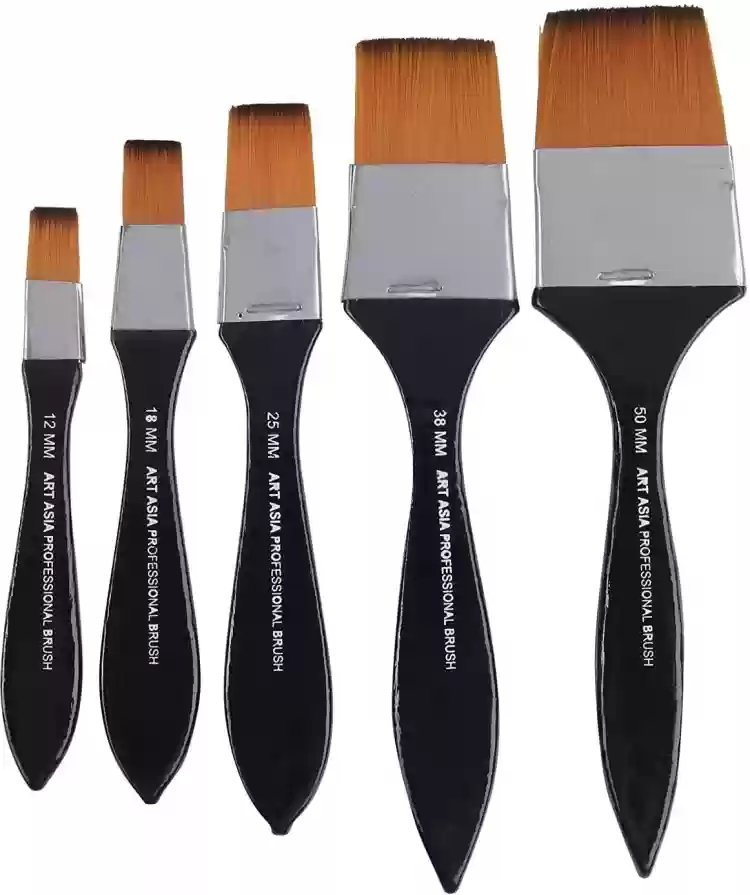
A wash brush is like the big boss of paintbrushes. It’s wide and flat with medium to long hairs, great for covering large areas quickly.
Think of it like a paint roller for artists. It’s perfect for varnishing because it spreads paint smoothly and fast.
You can also use its edge to make fine lines or sharp edges. When you buy a set of paintbrushes, if there’s one that looks way bigger, that’s the wash brush.
These brushes are awesome for covering big areas on paper or canvas in no time. Since they’re thick, they’re also good for soaking up extra paint or water from your canvas.
Most of the time, artists use wash brushes to create solid backgrounds or big blocks of color.
So, if you need to paint a big sky or a huge field, the wash brush is your buddy.
Angled Brush

The angled brush, sometimes called a slanted or shader brush, is like a versatile tool for artists. It’s part of the flat brush family, but its bristles are cut at an angle, giving it a unique shape.
This angled shape allows artists to create smooth curves, precise lines, and varying thickness in their strokes with ease.
Normal flat brushes might struggle with these tasks, but the angled brush excels. Its slanted tip lets you navigate curves and corners smoothly, making it perfect for filling in small areas or covering larger ones effortlessly.
So, in simple terms, the angled brush is a handy tool that helps artists achieve precise and varied strokes, making their artwork more detailed and beautiful.
Flat Brush
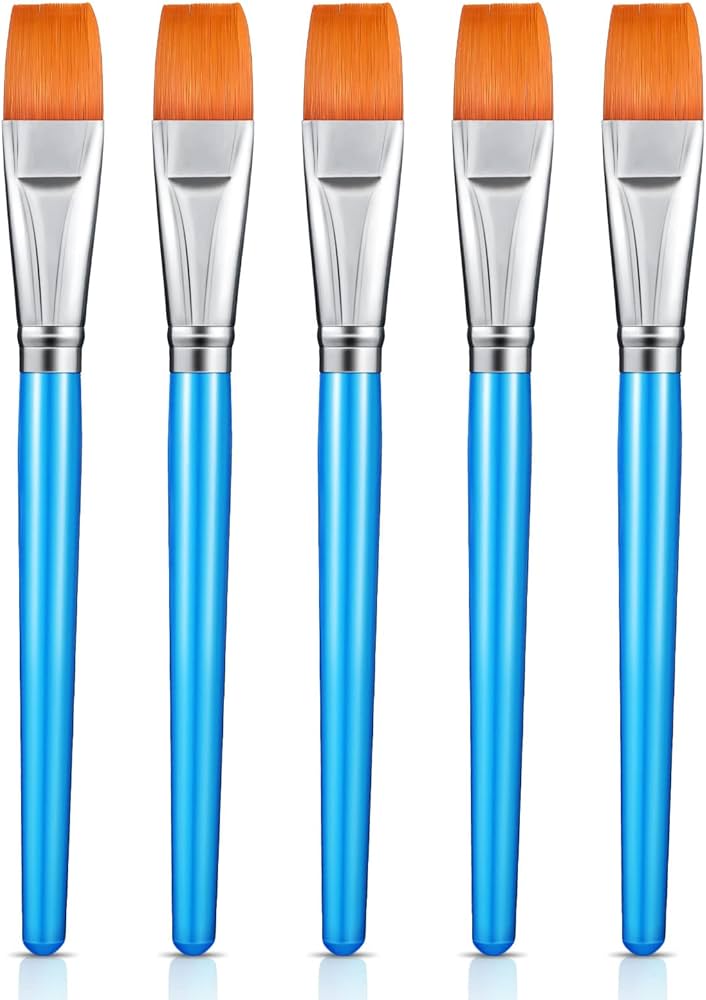
Flat brushes are like smaller versions of wash brushes, but they’re not as thick. They’re great for covering small surfaces with paint and are easier to control.
You’ll often see flat brushes—they have flat bracelets holding the bristles, which are spread out evenly. There’s a popular type called “One Stroke” with long bristles that hold more paint.
You can use flat brushes for almost any painting job, but they’re especially good for blending, washing, and shading. They’re also good for making thin lines and blending colors smoothly. You can use them for things like floating, stroke work, applying base coats, and varnishing.
How much paint a flat brush can hold depends on the bristles and their length. Brushes with longer natural or mixed bristles hold more paint than ones with shorter synthetic ones.
Fan Brush

The fan brush is like a little handheld fan with its bristles spread out in a flat, wide shape. It’s perfect for painting things like grass, trees, and watery designs with acrylic paints.
You can use it for blending colors smoothly together or adding light touches to dark parts of your painting. With a fan brush, you can create different textures by tapping it lightly or making long strokes.
So basically, a fan brush is great for making nature scenes in paintings, but it’s also awesome for experimenting and adding interesting effects to your artwork.
Round Brush
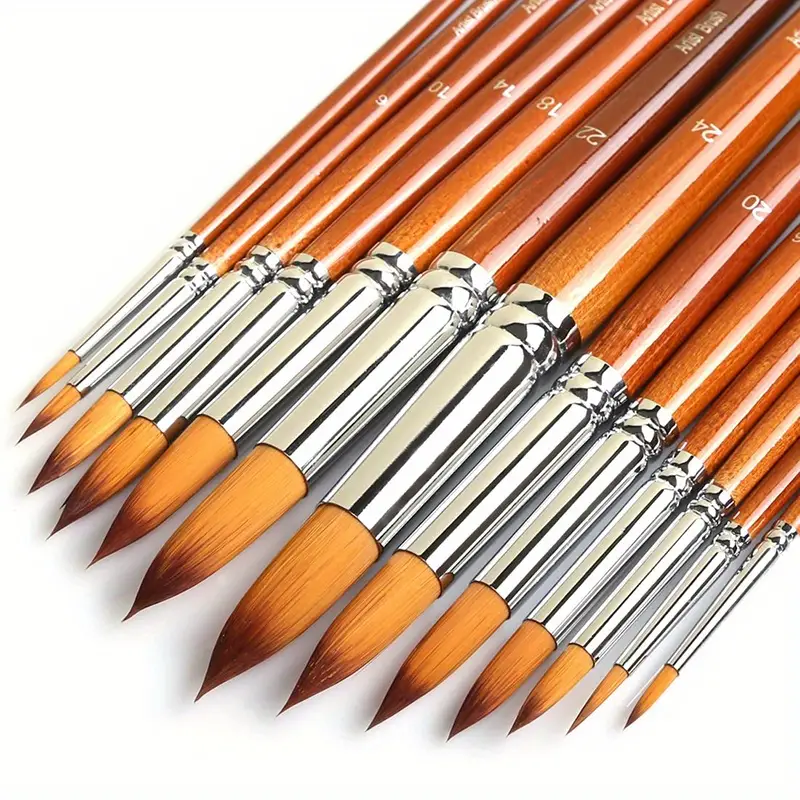
Round brushes are like holding a pencil – they give you excellent control over your painting.
They have a soft, rounded edge and come in different sizes. They’re perfect for detailed work, creating strokes, and filling in small areas.
Artists love using them for acrylic painting because they offer maximum control. There are two main types: one with a sharp point for fine lines, and another even narrower one for delicate details.
So, if you want precise control over your paint, grab a round brush!
Liner Brush
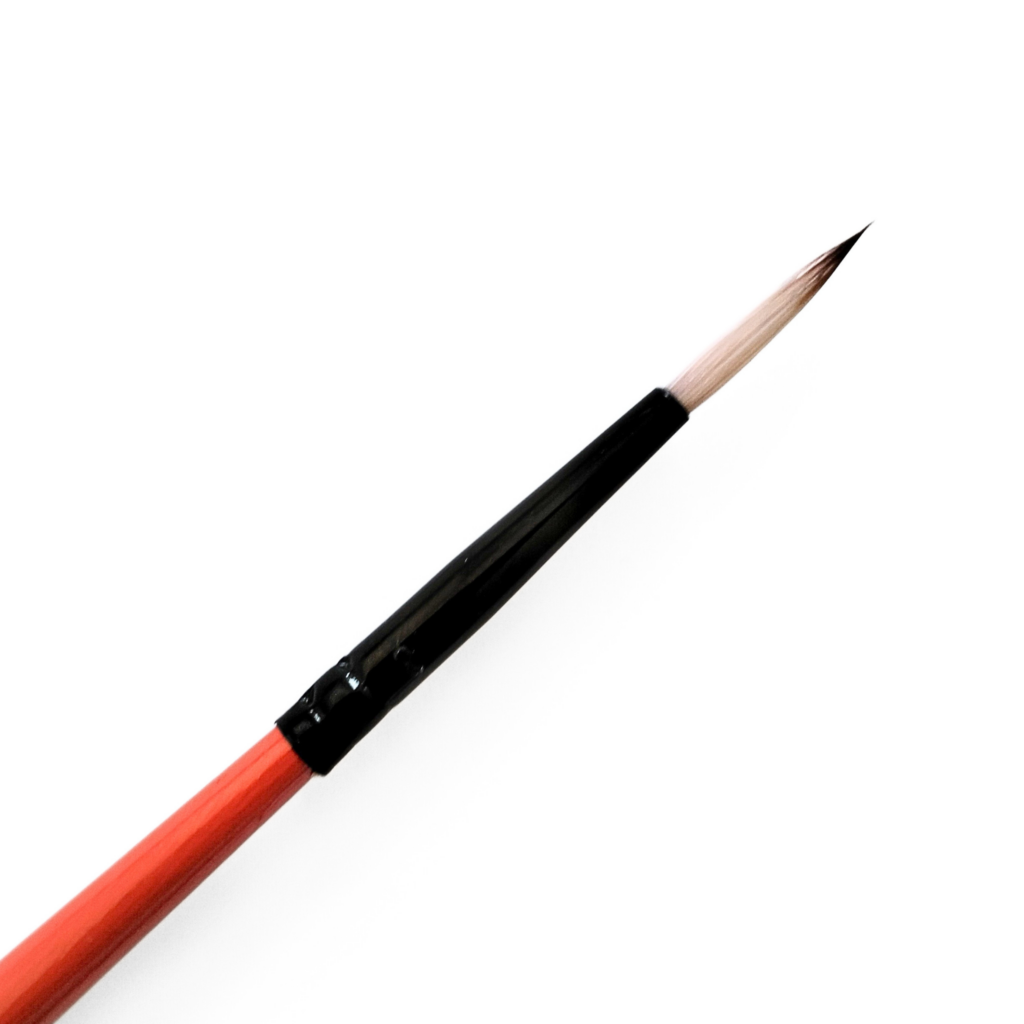
The liner brush, also known as the rigger brush, is a remarkable tool in the artist’s arsenal, prized for its ultra-thin profile and long bristles.
Resembling a slimmer version of the round brush, it excels in executing delicate strokes and intricate detailing, particularly in lettering and fine designs.
Artists frequently employ it for adding signatures, numbers, and other fine details to their artwork.
Remarkably versatile, the liner brush accommodates various paint mediums such as oil, acrylic, and ink. It’s most effective when lightly dipped in water prior to use, facilitating smoother paint application.
Two primary variations exist: the script liner, with longer bristles ideal for intricate lettering, and the short liner, featuring shorter bristles suitable for finer details like eyelashes.
Despite its slender appearance, the liner brush possesses a surprising capacity to hold fluid paint, making it indispensable for tasks requiring precision and finesse.
Filbert Brush
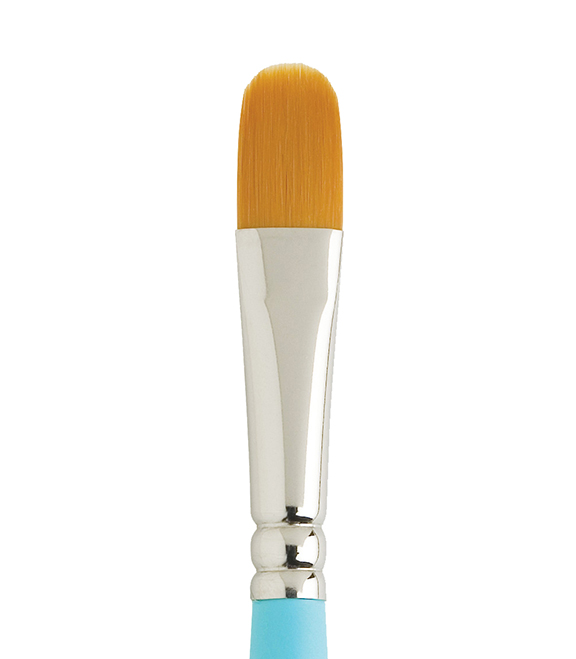
A Filbert brush is like the Swiss Army knife of paintbrushes, with its flat shape and longer bristles that taper to a rounded tip.
It’s versatile, offering thin lines when used on its side and broad strokes when applied flat, making it ideal for various painting techniques.
Perfect for base coating due to its ability to smooth out ridges, it’s favored by figurative painters for its capacity to create a range of marks, from precise details to broader strokes.
Its unique shape allows for effortless blending and application of washes, as it can hold a good amount of paint or water.
Whether filling in rounded areas or delicately detailing petals and feathers, the Filbert brush combines the precision of a round brush with the coverage of a flat brush, making it an essential tool for artists seeking versatility and quality in their work.
Mop Brush

The mop brush is like a soft, fluffy round brush that’s great for putting lots of paint on a canvas at once. It looks a lot like a makeup brush, so watch out for that!
Mop brushes are good for making smooth, blended colors and softening harsh lines. They’re also handy for soaking up extra water or paint from the canvas.
Mop brushes are perfect for making big, flowing shapes and for creating washes of color that can change from wide to narrow depending on how you use them.
They’re versatile tools for artists who want to add depth and softness to their paintings.
Watercolor Brushes

Watercolor brushes come in various shapes and sizes, including special ones like wash and mop brushes.
A water brush is a unique tool combining a brush head with a handle that’s a water reservoir, allowing for easy refills and gradual water release while painting.
It simplifies transitioning from dark to light colors, making it great for on-the-go sketching without needing a separate water container. Cleaning is simple—just squeeze out excess water and wipe with a tissue.
However, it’s important not to fill them with calligraphy ink or dilute watercolors to avoid clogging, and the behavior may vary between brands.
Importance Of Using The Right Type Of Paint Brush

Using the right paintbrush is super important for a good painting job.
If you use the wrong one, your project might look messy with paint drips or uneven edges. Plus, it can take a lot longer if you’re constantly switching brushes.
Picking the right brush can actually save you time and make your work look more professional. So, it’s really crucial to choose the best brush for each job you’re doing.
Conclusion
The wide variety of paint brushes available gives artists lots of options to bring their creative visions to life.
From large brushes that can cover big areas quickly with broad strokes, to tiny detailed liner brushes for intricate designs – each brush type serves a unique purpose.
By understanding the characteristics of different brushes like their size, shape, and bristle type, artists can choose the perfect tool for any painting project.
Picking the right brush makes it much easier to achieve professional-looking results, whether you need to paint large surfaces or delicately add small details.
So the next time you start a new painting, remember the importance of selecting the proper brush. The magic is in choosing the brush that fits your needs. Happy painting!


Leave a Reply